#F-35 in Finland
Explore tagged Tumblr posts
Text
youtube
#youtube#militarytraining#Finland#military news#aviation enthusiasts#F-35 in Finland#aviation#highway landing#Air Force#transportation innovation#airshow#fighter jet#defense technology#military operations#military aircraft#aircraft landing#fighter aircraft#F-35 landing#military aviation#defense news#F-35 Lightning II#F-35
1 note
·
View note
Text
For a few years now, I've taken multiple opportunities to ask groups of my fellow Americans the same question: "do you think early 21st century America is a good place to raise a child?" Answers varied from person to person, even among parents of children, from "yeah, pretty good" all the way down to "oh hell no." Rather than give my answer, and go into my reasons (for now) let's look at a report card ranking 35 major countries by several criteria, that just rated only Mexico as worse than the USA as a place to raise a family.
Safety: F. Based on homicide rate, average fear of crime, risk of dying to war or terrorism, school shootings per capita, and protection of civil rights for all. We did okay on most of the sub-ratings, but barely mediocre on civil rights and, well, obviously insanely bad compared to everybody else on school shootings.
Happiness: C+. Based on the human freedom index, world happiness index, per-capita suicide rate, household income inequality, and whether or not some families are discriminated against in adoption rights. I couldn't quickly find the sub-ratings on this one, but the USA came out pretty average.
Cost: F. Based on child care costs, per household family support spending, out-of-pocket educational costs, out-of-pocket health spending, and income-adjusted cost of living. The UK and New Zealand were even worse on child-care costs, but the US came in dead last in every other sub-category. We are the only country that expects those costs to be entirely born by parents who currently have minor children instead of spreading them out across all households.
Health: D-. Based on maternal mortality rate, child mortality rate, access to contraception, air pollution level, and average life expectancy. Because we're not in the bottom 5, I again can't easily find the US ranking on each of those sub-ratings, but I imagine we really got hit on our maternal mortality rate.
Education: C+. Based on teen enrollment rate, early-20s enrollment rate, average reading performance, average math performance, and average science performance. We weren't in the top or bottom 5 so, again, I don't know our detailed rankings but we did end up above average. And finally ...
Time: F. Based on time off per worker, weeks of paid maternity leave, weeks of paid paternity leave, weeks of mandatory paid sick leave, weeks of mandatory paid vacation leave. Only Mexico gave its workers fewer hours off work, and we are the only country in the survey to have a zero in all four other categories.
Across all countries: Only 5 of the 35 countries got an A+ overall. Starting with the highest score: Iceland, Norway, Sweden, Finland, and Luxembourg. Only two countries got an F, the US and Mexico. If you choose to have and raise a family in the United States, you will bear a higher percentage of those expenses than almost any country in the world, your children will be in more physical danger and health danger than anywhere in the industrialized world outside of an active war zone, and you will have less time with them, less time to parent them, than parents anywhere else surveyed.
So, you tell me: in your opinion, is the United States of America in the early 21st century a good place to have and raise children, or not?
Not to beg, but I'd really appreciate more eyes on this, please? Especially from my fellow Americans and doubly-so from people who have kids or who have recently raised kids?
168 notes
·
View notes
Text
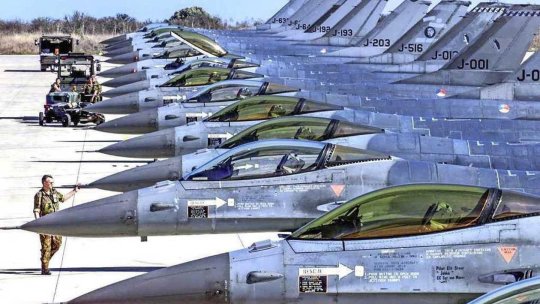
The Netherlands authorizes Ukraine to use donated F-16 fighters to attack targets in Russia
Dutch politicians follow the same decision made by Denmark on the use of the F-16 for attacks within Russian territory.
Fernando Valduga By Fernando Valduga 06/04/2024 - 08:00 in Military, War Zones
0
Shares
542
Views
Share on Facebook
Share on Twitter
The Netherlands announced that it will allow the Ukrainian Air Force to use the 24 F-16 fighters it will receive by donation to be used in attacks against targets within Russian territory.
The Dutch Minister of Defense, Kajsa Ollongren, confirmed that the Netherlands will not impose limitations on the use of F-16 jets. This decision marks a divergence from Belgium's policy, which limits the use of its donated F-16s.
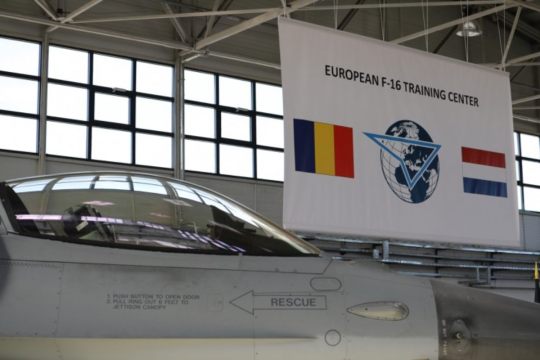
In an interview with the newspaper Politico at the Shangri-La Dialogue in Singapore, Ollongren said: "There is no [a restriction to the Belgian style]. We are putting into practice the same principle that we apply to all other supplies of capacity, that is, once it is delivered to Ukraine, it is theirs to use." She added that the Netherlands only asks Ukraine to comply with international law and the right to self-defense, as established in the United Nations Charter, ensuring that the jets are used to achieve Ukraine's military objectives in self-defense.
Ollongren and U.S. Secretary of Defense Lloyd Austin were among the senior officials who met with the President of Ukraine, Volodymyr Zelenskyy, at the Singapore conference. Denmark also approved Ukraine's use of F-16s provided by Denmark against military targets on Russian soil. Germany has also indicated that Ukraine can use weapons provided by the West for its defense.

Recently, the U.S. authorized Ukraine to attack Russian territory near Kharkiv using U.S.-suplied weapons, confirmed by President Zelensky's spokesman, Serhii Nykyforov, on May 31. However, Washington continues to restrict the use of long-range weapons for deeper attacks within Russia. President Zelensky has expressed interest in using long-range weapons, such as British-made Storm Shadow missiles, but the United Kingdom has not yet fully authorized their use, possibly awaiting a clear position from the White House. The issue has been discussed twice with UK authorities, but remains dependent on a broader international consensus, particularly the US position.
Tags: Military AviationF-16 Fighting FalconUkraine Air ForceRNLAF - Royal Netherlands Air Force / Royal Dutch Air ForceWar Zones - Russia/Ukraine
Sharing
tweet
Fernando Valduga
Fernando Valduga
Aviation photographer and pilot since 1992, he has participated in several events and air operations, such as Cruzex, AirVenture, Dayton Airshow and FIDAE. He has works published in specialized aviation magazines in Brazil and abroad. He uses Canon equipment during his photographic work in the world of aviation.
Related news
BRAZILIAN AIR FORCE
For the first time, FAB uses BabyPod incubator for aeromedical evacuation of five-day-old baby
04/06/2024 - 07:00
ILA BERLIN
Airbus reveals stealth Wingman drone concept similar to a fighter
03/06/2024 - 22:26
MILITARY
Finland approves purchase of JASSM-ER cruise missiles for its F-35 fleet
03/06/2024 - 16:00
MILITARY
Textron will manufacture three more T-6C coaches
03/06/2024 - 15:00
MILITARY
VIDEO: Bayraktar TB3 Drone from Turkey completes ski jumping test for aircraft carrier operation
03/06/2024 - 14:00
ARMAMENTS
Kongsberg will supply JSM missiles to the U.S. Air Force through a multimillion-dollar agreement
03/06/2024 - 13:00
21 notes
·
View notes
Text
The Finnish parliament approved the country’s Nato treaty by a vote of 184–7 at the beginning of the month, and on Thursday, Niinistö will officially sign it into law, Aamulehti (siirryt toiseen palveluun)reported.
There are other steps, however, as the Tampere-based paper noted that Finland still awaits ratification by the final two remaining Nato member states yet to approve its application, Turkey and Hungary.
Last week Turkish President Recep Tayyip Erdogan announced that his country had decided to begin the process of ratifying Finland's application to join the alliance.
The Hungarian parliament is expected to vote on Finland's membership next Monday.
Cleaner strike begins
Finland may get a bit untidy this week as thousands of cleaners and property managers walked off the job on Thursday morning, as part of a two-day industrial action calling for better pay.
Citing news agency STT, newspaper Ilkka-Pohjalainen (siirryt toiseen palveluun) reported that some 25,000 employees have taken part, affecting some 16 cleaning service and maintenance providers and thousands of sites across Finland.
The new round of industrial action was confirmed on Wednesday, after the sector's trade union PAM rejected a reconciliation proposal put forth by the national labour mediator.
PAM has also issued another three-day strike warning for next week, that could start on next Thursday. That industrial action would involve an estimated 27,000 employees across 18 companies, Ilkka-Pohjalainen noted.
HS: Ukraine requests Hornet discussion
Kyiv has requested that Ukraine, Finland and the United States hold trilateral talks to discuss Hornet jets, Helsingin Sanomat (siirryt toiseen palveluun) reported on Thursday, citing information obtained by its journalists.
The talks would concern the possibility of Finland sending some of its decomissioned Hornet fighters to Ukraine. Over the course of several years, Finland's current Hornet fleet will start to be decommissioned in 2025 and gradually replaced with US-made F-35 jets.
The renewed request comes after comments Prime Minister Sanna Marin (SDP) made while meeting with Ukrainian President Volodymyr Zelensky, in Kyiv earlier this month.
At the time, Marin said that "there will certainly be a discussion about fighter jets. Various countries are weighing their own abilities to deliver this kind of military support. I think this could also be discussed in Finland."
However, the comments sparked a confused reaction, with some Finnish leaders expressing surprise by the statement.
HS noted that it was not aware of similar requests made to other countries.
Marin to receive honorary degree
New York University is to award Finland's PM Sanna Marin with an honorary Doctor of Humane Letters degree, Hufvustadtsbladet (siirryt toiseen palveluun) (HBL) reported on Thursday.
The university described (siirryt toiseen palveluun) Marin as "a member of the vanguard of a new generation of European leadership," praising her leadership throughout the Covid pandemic and response to Russia's war against Ukraine.
The university's other honorary degree recipients this year include Nobel-winning chemist Carolyn Bertozzi, American Ballet Theatre (ABT) principal dancer Misty Copeland, and science education innovator and University of Maryland, Baltimore County (UMBC) President Emeritus Freeman A. Hrabowski.
The award ceremony will take place on 17 May at Yankee Stadium in New York City, where Marin is to deliver a keynote speech, according to the Swedish-language daily.
2 notes
·
View notes
Text
Sea lamprey facts (cause scronkle)
The sea lamprey (Petromyzon marinus) is a parasitic lamprey native to the Northern Hemisphere. It is sometimes referred to as the "vampire fish".
The sea lamprey has an eel-like body without paired fins. Its mouth is jawless, round and sucker-like, and as wide or wider than the head; sharp teeth are arranged in many concentric circular rows.
Its mouth is jawless, round and sucker-like, and as wide or wider than the head; sharp teeth are arranged in many concentric circular rows.
There are seven branchial or gill-like openings behind the eye. Sea lampreys are olive or brown-yellow on the dorsal and lateral part of the body, with some black marblings, with lighter coloration on the belly. Adults can reach a length of up to 120 cm (47 in) and a body weight up to 2.3 kg (5.1 lb).
The etymology of the genus name Petromyzon is from petro- "stone" and myzon "sucking"; marinus is Latin for "of the sea".
The species is found in the northern and western Atlantic Ocean along the shores of Europe and North America, in the western Mediterranean Sea, the Black Sea, and as an invasive species in the shores of the Great Lakes.
They have been found at depths up to 4000 meters and can tolerate temperatures of 1–20 °C (34–68 °F).
In North America, they are native to the Connecticut River basin in the United States.
The largest European populations of sea lampreys are located throughout the southwestern areas of Europe (north-central Portugal, north-northwest of Spain, and west–southwest of France).These countries also support the main fisheries of the species.
Sea lampreys are anadromous; from their lake or sea habitats, they migrate up rivers to spawn. Females deposit a large number of eggs in nests made by males in the substrate of streams with moderately strong current. Spawning is followed by the death of the adults. Larvae burrow in the sand and silt bottom in quiet water downstream from spawning areas and filter-feed on plankton and detritus.
After several years in freshwater habitats, the larvae undergo a metamorphosis that allows young, post-metamorphic lampreys to migrate to the sea or lakes, and start the adult hematophagous method of feeding
The lamprey uses its suction cup-like mouth to attach itself to the skin of a fish and rasps away tissue with its sharp, probing tongue and keratinized teeth. A fluid produced in the lamprey's mouth, called lamphredin prevents the victim's blood from clotting. Victims typically die from excessive blood loss or infection. After one year of hematophagous feeding, lampreys return to the river to spawn and die, a year and a half after the completion of metamorphosis
Lampreys are considered a delicacy in some parts of Europe, and are seasonally available in France, Spain, and Portugal. They are served pickled in Finland.
Due to its lifecycle that switches between fresh and salt water, the sea lamprey is adapted to tolerate a wide range of salinities. Cell membranes on the surface of the gills are major contributors to ionoregulation. Changes in membrane composition influence the movement of different ions across the membrane, changing amounts of components to change the membranes' environment.
the larvae are called ammocoetes
Lampreys also maintain acid-base homeostasis. When introduced to higher levels of acids, they are able to excrete excess acids at higher rates than most other saltwater fishes, and in much shorter times, with the majority of the transfer of ions occurring at the gill surface.
The lamprey genome may serve as a model for developmental biology and evolution studies involving transposition of repetitive sequences. The lamprey genome undergoes drastic rearrangements during early embryogenesis in which about 20% of the germline DNA from somatic tissues is shed. The genome is highly repetitive. About 35% of the current genome assembly is composed of repetitive elements with high sequence identity.
Sea lampreys are considered a pest in the Great Lakes region. The species is native to the inland Finger Lakes and Lake Champlain in New York and Vermont. Whether it is native to Lake Ontario, where it was first noticed in the 1830s, or whether it was introduced through the Erie Canal which opened in 1825 is not clear.
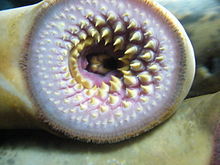
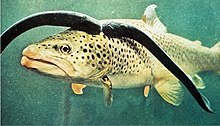
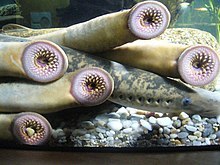
5 notes
·
View notes
Text
The United States nearly doubled the number and price tag of approved arms sales to NATO allies in 2022 compared with 2021, as alliance members scramble to stock up on high-end weapons in the wake of Russia’s war in Ukraine.
In 2021, the U.S. government approved 14 possible major arms sales to NATO allies worth around $15.5 billion. In 2022, that jumped up to 24 possible major arms sales worth around $28 billion, including $1.24 billion worth of arms sales to expected future NATO member Finland, according to a Foreign Policy analysis of two years of data from the U.S. Defense Department’s Defense Security Cooperation Agency.
While not all arms sales will be finalized with the same numbers outlined in the proposals, the sharp uptick in these plans reflects a massive shift in Europe’s security landscape after Russia launched its full-scale invasion of Ukraine in late February. After some European countries allowed their defense capabilities to atrophy for decades, Russia’s invasion jolted Europe into a scramble to rapidly boost military spending.
“Everyone is trying to lock down arms sales deals as quickly as possible,” said one Eastern European defense official, who spoke to Foreign Policy on condition of anonymity. “Russia’s invasion has brought a cold new reality to Europe.”
Some of the approved U.S. arms sales in 2022 were years in the making, such as Germany’s plan to purchase F-35 fighter jets in a deal worth around $8.4 billion. But many other major arms sales were rushed after the war broke out in Ukraine, as European countries on NATO’s eastern flank dashed to bulk up their own military capabilities in an effort to backfill the equipment they shipped to Ukraine and deter Moscow from any military incursions on alliance territory.
In early December, for example, the State Department cleared a possible sale of 116 M1 Abrams battle tanks to Poland, after an initial proposed plan to sell Poland 250 of such battle tanks was announced in April. The three Baltic countries on NATO’s vulnerable eastern flank—Latvia, Lithuania, and Estonia—all pursued plans to procure the types of U.S. long-range rocket and missile systems that helped Ukraine turn the tide of the war against Russia in recent months. The State Department approved a plan to sell up to six HIMARS rocket launchers to Estonia in July under its foreign military sales program, in a deal worth around $500 million. It approved a similar sale to Lithuania in November. A U.S. deal to sell HIMARS to Latvia is expected to be announced in early 2023, according to several U.S. and European officials familiar with the matter.
The data showcases how the United States remains a major arms supplier for allies in Europe in the short term, even as Europe’s own defense industries scramble to meet wartime demands for conventional arms and ammunition. The flurry of new defense sales comes amid growing concerns in the West that NATO countries are running out of excess military equipment and munitions to send to Ukraine to aid its fight against the Russian invasion. Defense officials and experts say Europe’s defense industrial base is struggling to rapidly expand its capacities to keep pace with the new demand.
“Europeans are getting extremely worried about not having enough of their own military equipment after sending so much to Ukraine,” said Rachel Rizzo, a scholar at the Atlantic Council. “The United States certainly plays a role in helping here, which is evidenced by the increase in arms sales in 2022 compared to 2021. However, it also highlights that Europe needs to get its act together in the security and defense realm.”
At this phase in the war, Ukraine is firing some 4,000 to 7,000 rounds of artillery a day, rapidly using up munitions delivered by the West shortly after they arrive. The United States has sent some 806,000 155 mm artillery rounds to Ukraine since Russia began its invasion. By comparison, the United Kingdom, which has one of Europe’s strongest militaries, has sent around 16,000 rounds to Ukraine as it grapples with its own supply shortages. In November, the British government notified one of the country’s top defense industry firms to expand its production of artillery shells.
On the other side of the conflict, however, Russia’s battered forces are also running low on ammunition after a series of stinging battlefield defeats that pushed them farther back into eastern Ukraine before winter set in. Moscow has sought to backfill its own dwindling munitions supplies through deals with Iran and North Korea. It has also taken some 20,000 tons of ammunition from neighboring Belarus, Lithuania’s defense minister, Arvydas Anusauskas, told Defense News in an interview this week. Under President Aleksandr Lukashenko, Belarus has served as an accomplice and logistical staging ground for Russia’s invasion.
Successive U.S. presidents have long called on NATO’s European allies to boost their defense spending, a campaign that at times caused rifts within the alliance and diplomatic headaches, particularly under former U.S. President Donald Trump. But Russia’s initial invasion of Ukraine and illegal annexation of Crimea in 2014 slowed the decline in Europe’s overall defense spending. Its full-fledged invasion in February has completely reversed the trend, as more NATO allies announce massive increases in defense budgets.
In 2014, just four NATO allies—the United States, United Kingdom, Estonia, and Greece—met the alliance’s benchmark of spending 2 percent of GDP on defense. By 2022, 10 of NATO’s 30 members are slated to spend at least 2 percent of GDP on defense. Some countries are going even further: Estonia pledged to boost its annual defense budget by 42 percent in 2023 and committed to spending 3 percent of its GDP on defense.
Finland and Sweden, which declared their intent to join NATO this year after Russia’s invasion, have also announced plans to increase their defense spending. Finland already spends around 2 percent of GDP on defense, while the Swedish government has unveiled plans to increase defense spending to 2 percent of GDP by 2023. The two Nordic countries’ accession to NATO has been delayed by Turkey, but U.S. and NATO defense officials say they expect Turkey to approve their membership by next year.
2 notes
·
View notes
Video
youtube
American F-35 Pilot Emergency Takeoff at Ranua Finland 100 Miles From Ru...
0 notes
Note
Hello my friends
I am Youssef from Gaza
.I need your help if you can
Please donate to save my life and the lives of my children
I'm asking for a small donation of €25 from each person. €35 will save my kids from dying and help me cover expenses and rebuild.
Through the link (please see my CV) https://www.gofundme.com/f/q37qd5-please-help-my-family-in-gaza?attribution_id=sl:a7c90392-5bd1-45ca-a58b-c3a57b462cff&utm_campaign= man_ss_icons&utm_medium =customer&utm_source=copy_link
hi youssef!!! i’m so sorry to hear that you and your family are going through this tragedy. i really hope the people who are able to donate can see this. i’ll add your gfm to this post. all my love to you from finland <3
0 notes
Text
Finnish Defence Forces Acquires F-35 Fighter Avionics and Maintenance Services from Insta
Insta and the Finnish Defence Forces have agreed on the three-year acquisition package related to Finland's F-35 fighter program. The acquisition is based on the strategic partnership agreement between the Finnish Defense Forces and Insta and covers the years 2024–26. The acquisition covers, among other things, building maintenance and service capabilities for the avionics of the Finnish Air Force’s Lockheed Martin F-35 Lightning II multi-role fighters, i.e. the plane’s electronic systems, as well as related support services. The F-35 fighters will be put into service from 2026 onwards. This agreement ensures in part that Finland has the necessary competences and the ability to maintain the F-35 systems and security of supply for decades to come. The systems in the F-35 fighter jet require special expertise and a broad understanding of technology. Long-term cooperation, a strategic partnership with the Finnish Defence Forces, and earlier fighter purchases have resulted in Insta accumulating strong technology and business area expertise that can support the security of supply of the Finnish Defence Forces’ critical systems, even during emergencies.
Insta and the Finnish Defence Forces have agreed on the three-year acquisition package related to Finland’s F-35 fighter program. The acquisition is based on the strategic partnership agreement between the Finnish Defense Forces and Insta and covers the years 2024–26. The acquisition covers, among other things, building maintenance and service capabilities for the avionics of the Finnish Air…

View On WordPress
0 notes
Text
La Finlandia acquista JDAM e SDB I per gli F-35 Il Comando Logistico delle Forze Armate finlandes (Puolustusvoimien logistiikkalaitos) ha sottoscritto con le controparti statunitensi il contratto relativo parte dell'armamento aria-suolo di cui sarà dotato l'F-35A. Tale pacchetto d'armamento del Lightning II prevede munizioni JDAM e GBU-39 SDB I per attacchi di precisione.
0 notes
Text

Making history! 📜
Last week, two @usairforce F-35 Lightning II aircraft assigned to the 48th Fighter Wing at RAF Lakenheath, England, made history by landing on a highway strip less than 100 feet wide in Ranua, Finland, during Exercise BAANA 2024.
@theF35JPO via X
18 notes
·
View notes
Text
23 January 2024
Turkey’s parliament late on January 23 gave its long-awaited approval to Sweden joining Nato.
It is expected that the bill on ratifying accession will be signed into law by Turkish President Recep Tayyip Erdogan in the coming days.
As things now stand, the only Nato member country still blocking Sweden’s path into the transatlantic military alliance is Hungary. Hungarian prime minister, Viktor Orban, said on January 23 that he has invited Swedish counterpart Ulf Kristersson to visit Budapest to negotiate on Sweden’s Nato accession. Soon after, however, Sweden's foreign minister, Tobias Billstrom, told reporters he saw no reason to negotiate with Hungary for a ratification of Stockholm’s Nato application as Hungary, unlike Turkey, did not present any conditions when Sweden was invited to join at the 2022 Nato summit in Madrid.
“What kind of payoff Erdogan might have been demanding from the West has remained unclear.”
[article continues below break]
Turkish MPs backed the approval of Swedish Nato membership after a four-hour debate, with 287 of 346 MPs voting yes, 35 no and the rest abstaining.
Kristersson quickly responded to the vote, saying: “Today we are one step closer to becoming a full member of Nato. Positive that the Grand General Assembly of Türkiye has voted in favour of Sweden’s Nato accession.”
Nato’s secretary-general, Jens Stoltenberg, welcomed the vote. He added that he now expected Hungary to ratify Sweden “as soon as possible”, adding: “Sweden’s membership makes Nato stronger and us all safer.”
While Turkey was relatively quick to back Finland’s bid to join Nato—it applied at the same time as Sweden last year in the wake of Russia’s invasion of Ukraine—Erdogan was fast to throw obstacles in the way of Sweden acceding into Nato, pointing to the presence of individuals in the Nordic country that Ankara alleges are terrorists and militants who back the separatist and insurgent Kurdistan Workers’ Party (PKK), an organisation banned in Turkey.
Most Turkey watchers, however, remain convinced Erdogan has been after more than a crackdown on the PKK in Sweden in return for backing the Swedish Nato bid, while noting that he has also used the stalling to play up Turkey’s credentials to his domestic audience as a “power” that cannot be pushed around.
What kind of payoff Erdogan might have been demanding from the West has remained unclear.
One area to look at is defence sales. Turkey faces a pressing need to upgrade its fighter jet fleet and the US Biden administration has given its assent to a bid from Ankara to acquire new F-16 jets and modernisation kits for F-16s already flown by the Turkish air force. However, the US Congress runs a bipartisan unofficial boycott on major arms sales to Turkey, citing various disagreements with the country over matters including its acquisition of advanced missile defence systems from the Kremlin, incursions made by the Turkish armed forces into Syria and Erdogan’s disregard for basic human rights such as with the jailing of opponents. Whether the Congress will budge on the boycott to allow the F-16 deal remains an open question.
In terms of Sweden’s path into Nato, Stockholm has already signed a deal with the US giving full access to 17 of its military bases, while it has commenced the Nato integration process.
0 notes